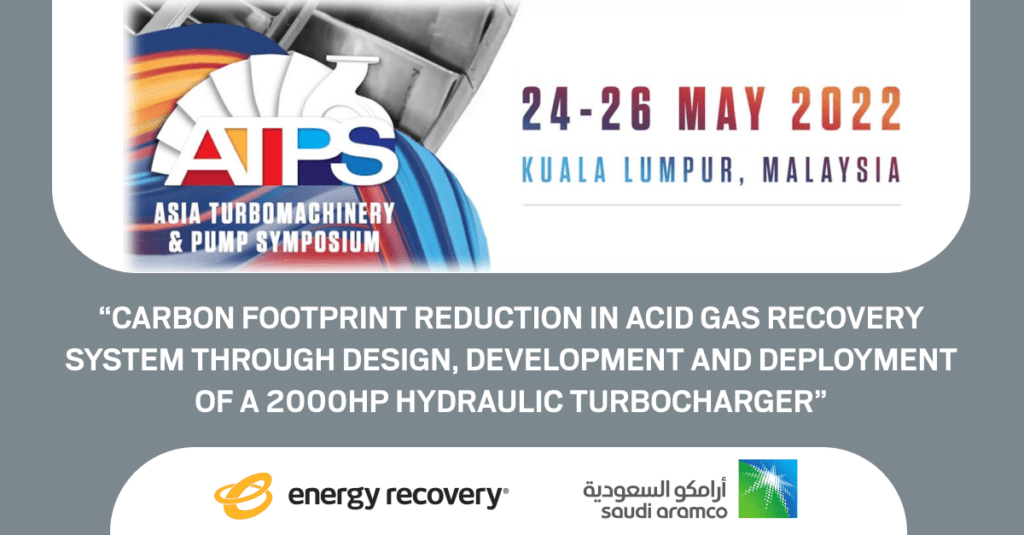DESIGN, TESTING, COMMISSIONING AND OPERATING EXPERIENCE OF A 2000HP HYDRAULIC TURBOCHARGER FOR REDUCING CARBON FOOTPRINT OF ACID GAS RECOVERY PROCESS
Authors (Energy Recovery): Chinmay Deshpande, Matthew Pattom, Dung Tran
Authors (Saudi Aramco): Rehan Farooqi, Mohammad Buali, Abdullalh A. Al-Ghamdi
Four sets of hydraulic turbocharger based energy recovery systems (2000 hp each) were successfully designed, manufactured, tested and commissioned for Acid Gas Recovery plants (AGR) in Saudi Arabia. The hydraulic turbocharger consists of a liquid phase turbine runner and a pump impeller mounted in a back‐to‐back configuration on a common rigid shaft, in a single seal‐less casing. The shaft is supported by process lubricated hydrodynamic radial and axial (dual‐acting) bearings of non‐metallic construction. The turbine side extracts wasted pressure energy from the rich amine and along with a series of throttle, auxiliary and bypass valves, controls the level in the absorber. The pump side boosts the lean amine solvent to the absorber. Such a design provides major advantages compared to a conventional configuration of a reverse running pump‐as‐turbine coupled to a pump. These advantages include a compact single stage hydraulic design (as opposed to a multi‐stage design for a reverse running pump), smaller footprint, higher efficiency, absence of mechanical seals & associated support system, absence of lubrication oil system as well as simpler control.
Several complex design and testing challenges were overcome through development of novel design features and incorporation of provisions in a highly specialized test loop. Some of the unique experiences are shared in the paper. The seal‐less design of the turbocharger with no exposed rotating or bearing parts presented testing challenges such as determination of shaft power, individual pump side and turbine side performance and efficiencies; measurement and validation of axial thrust & axial position; as well as monitoring & control of bearing performance parameters. The test loop was engineered to operate the hydraulic turbocharger through its testable operating range with provisions to measure, control and monitor all the needed parameters. Testing was performed using water with viscosity 2.5 times lower than the operating fluid. This implied suitable modification to the design, monitoring and controlling of process‐lubricated bearings along with the internal system during testing to account for the change in viscosity. Data was evaluated to conduct root cause analysis of apparent bearing failures such as rub marks and to eliminate root causes by improving the manufacturing method to reduce misalignment & also using non‐metallic bearings.
Four identical units were built and completed successful Factory Acceptance Tests (FAT) in early 2018. The turbochargers achieved & surpassed the pump side rated requirements of 2148ft of head at 2820 gpm, at a rated speed of 8000 rpm, as part of the FAT. All the units were installed & commissioned in early 2020 by the End User. Each unit is part of 4×50 configuration – which includes the turbocharger and three circulation pumps running in parallel. The paper will provide details about the commissioning effort of the turbocharger units in the field, and their operating experience over a period of one year.
Download pdf